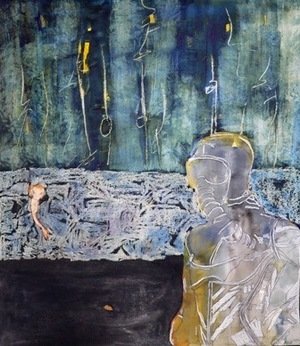SEA OF WATERCOLOUR IMPULSES 0
(International exhibition of watercolour “Baltic Bridges”, M. Žilinskas Gallery) Kotryna Džilavjanaitė
www.kamane.lt, 2006 11 24
Ole Werner Munck. Denmark. „There is no bad weather, only wrong clothes“
In brief: Flair and surprise are most probably the main features that determine the birth of watercolour paintings. Intuition becomes the main instrument presenting the joy of creating an artwork to a watercolourist. The sixth sense did not disillusion either the authors of the new international watercolour exhibition “Baltic Bridges” or its organisers (supervisor Virginija Vitkienė).
A pleasant punishment for the depreciation of watercolour became even several creative attitudes and directions of genres and styles in the exhibition. Decorative exhibits are replenished by generalised sketch-like works catching the ephemeral moment and reminding of the history of watercolour - up till the 18th century it was used for painting sketches of canvases and tapestries.
Merging weightless spots of colours speak in Aušra Andziulytė’s “About Sand and Water", eastern minimalism is represented in Kjell Ekström’s “Landscape from Japan", the intimacy of retro dance may be observed in Irena Luse’s “Dance”. One of the well-known European watercolours “Hare” by Albrecht Dürer (1502) has most probably inspired the animalist genre among authors. A lazy cat sticks in the painting of Ina Budrytė “A the End of the Yard", birds appear in Aistė Gabrielė Černiūtė’s painting “Birds”.
The influence of other painting techniques and art branches is getting visible in some watercolours presented in the “Baltic Bridges” – in “Takšt” by Voldemaras Barakauskas, “S-ins” by Edita Zarėkienė, etc. Meanwhile, there were also several surprises in the exhibition. The participation of the German painter Joachim Stallecker in the exhibition remained a mystery. And the painting “Thirty-two” of Vladas Lisaitis could be included to the Guinness records book – it is so huge.
Still, small curiosities of the exhibition and several works which are not worth being in the exposition do not shade the general positive impression. “Baltic Bridges” joined ten European countries and revealed the fresh, persistent and dynamic face of watercolour.









